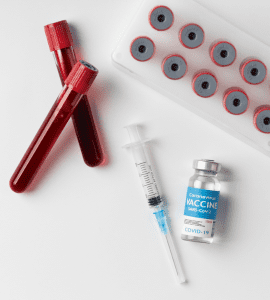Blood cancer – encompassing conditions such as leukaemia, lymphoma, and myeloma – continues to be a formidable health challenge globally, with approximately 1.3 million new cases diagnosed each year. The path to successful management and treatment of these conditions hinges significantly on early detection. Understanding the early warning signs and committing to regular health screenings can profoundly influence treatment outcomes and enhance the quality of life for those affected.
Recognising the Warning Signs
Recognising early indicators is paramount in the proactive management of blood cancer. Symptoms such as persistent fatigue, unexplained weight loss, night sweats, and swollen lymph nodes should prompt further medical evaluation. These signs, while sometimes linked to less severe health issues, can denote the early stages of blood cancers and should not be overlooked.
The Value of Routine Screenings
Routine blood tests are invaluable in the early detection process. These screenings can uncover abnormalities in blood cell counts or other markers that suggest blood cancer, enabling healthcare professionals to initiate timely and potentially more effective treatment strategies. The advantage of early diagnosis extends beyond the immediate management of the disease; it significantly broadens the spectrum of available treatment options, offering patients a better chance at a favourable outcome.
The impact of early detection on patient prognosis is underscored by survival rate statistics. Patients diagnosed in the initial stages of blood cancer have markedly higher five-year survival rates than those diagnosed at more advanced stages. This fact accentuates the critical nature of regular screenings and awareness of the disease's early signs.
Empowerment Through Education and Support
Education and awareness are vital in empowering individuals to take charge of their health. Knowledge of blood cancer's early warning signs and the benefits of regular screenings can motivate individuals to seek medical advice promptly, facilitating early detection and intervention. Healthcare providers play a crucial role in this educational endeavour, as they are positioned to inform patients about the significance of early detection and guide them in recognising the symptoms that warrant further investigation.
At HealthDeliver, our commitment to patient empowerment is at the forefront of our approach to combating blood cancer. We strive to equip our patients with the necessary knowledge and tools to detect the disease early. Our team of compassionate experts provides personalised care, ensuring that each patient's journey is supported and guided with the utmost expertise.
If you or someone you know is experiencing symptoms that could be indicative of blood cancer, or if there's a desire to understand more about the importance of early detection, I encourage you to reach out to us at HealthDeliver. Engaging with our team for a consultation can be a pivotal step in your healthcare journey. Early detection is not merely about identifying the presence of disease; it's a proactive measure that can significantly alter the treatment landscape, offering patients enhanced therapeutic options and a better chance at recovery. Join us in prioritising your health, and let's navigate the path to early detection and effective treatment together.









